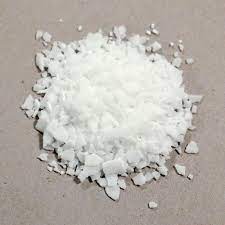Widening Demand-Supply Gap of Vegetable-based Stearic Acid Triggers Price Shocks in the Chinese Market
- 18-Jan-2022 5:58 PM
- Journalist: Timothy Greene
The Stearic Acid market in China, which is almost exclusively dependent on imports from Indonesia and Malaysia, has remained vulnerable throughout the fourth quarter of last year owing to the continued supply shortages driven by vegetable palm oil feedstock tightness. Continuing to reflect the similar market sentiments in January, the prices of Stearic Acid in China are dangerously rallying up. The last assessed prices of Stearic Acid showed a whopping increment of 7.6% from the prices assessed during December last year.
The latest price shocks got propelled by the sudden surge in the demand for Stearic Acid in the detergent sector, cosmetics & home care sector and the rubber processing sector. The detergent sector had remained strong since the previous month owing to the high consumption rate among the end-user consumers for hygiene maintenance in the backdrop of the scare from resurging COVID19 cases. The latest boom in the personal care sector was observed with an exponentially rising number of queries from this sector on account of increased sales among the masses on the prospect of the upcoming Chinese New Year. The looming festive period gave a jump to the rubber industry as well owing to its multiple ues in households and industrial activities.
Amid the crawling up demand, the Stearic Acid market is struggling to procure considerable volumes from the South Asian consignments which have faltered significantly due to the domino effect of the Malaysian floods. The December floods in Malaysia have reduced the stearic acid output and crippled the supply chain in the country, thereby cutting down the spot trading to the international downstream sectors. This scenario has encouraged the Chinese buyers to turn to Indonesian stearic acid supplies whose prices have inflated due to a sudden surge in the demand.
As per ChemAnalyst, the Stearic Acid market in China is expected to stay strong owing to halts in trading and downstream activity in the upcoming festive season in China amid sturdy demand prospects. The non-satiation of demand with low-running domestic inventories is anticipated to worsen the gap in supply fundamentals, consequently creating an upward push on the prices. A cooling in the price trends may be expected during the last week of February with an improvement in import volumes.



